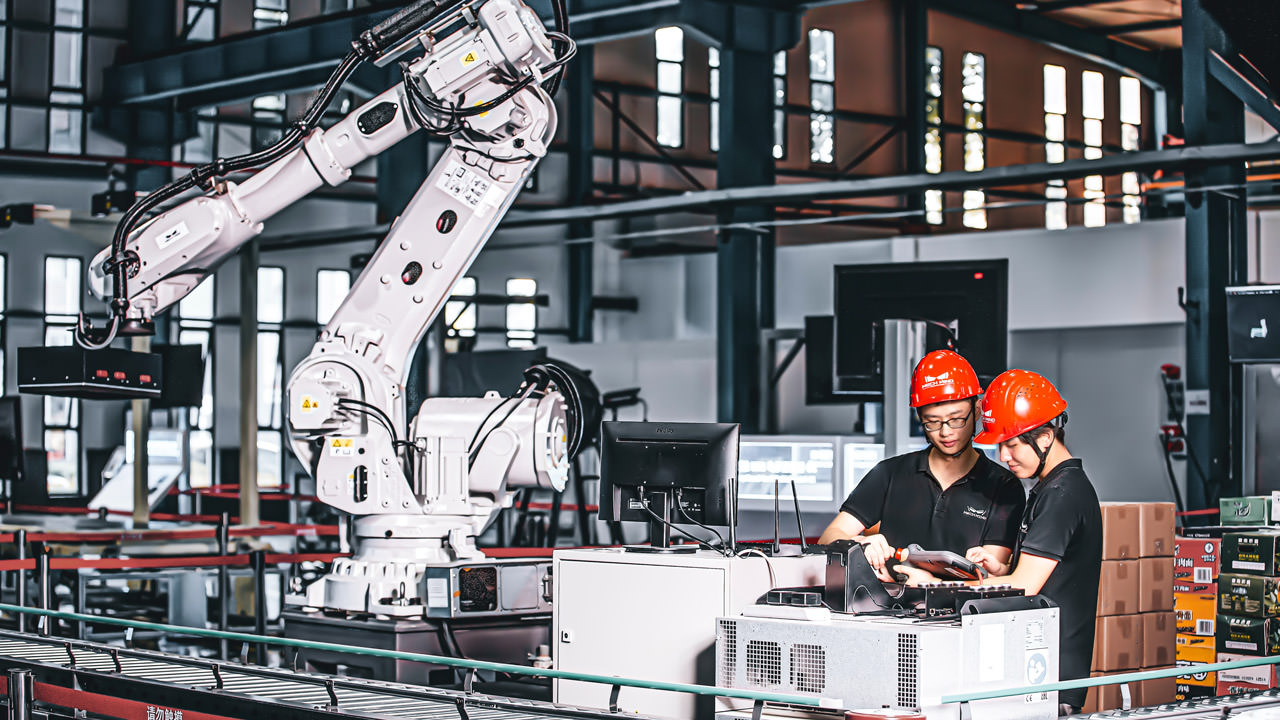TechnologySeptember 21, 2023
What is digital twin technology and impact for manufacturers?

Digital and virtual twins are quickly becoming the staple within many industries thanks to the number of benefits they bring to each company. Manufacturing and logistics in particular can benefit from the technologies, thanks to vastly reduced lead times and help when it comes to planning efficiently.
Digital Twin technology has quickly become a staple with many of the largest manufacturers in the automotive and industrial engineering sector around the world thanks to its ability to provide huge amounts of value in saving time and optimizing plant effectiveness.
Digital twin | virtual twin technology
Digital twin technology allows manufacturers to gain a digital representation of a real-world system – the digital twin mirrors the software or model to gain data and insight that can update. Digital twin is actually an executable model of a physical system. The physical system can be a factory or a plant or a mine or resource any of them. Which brings in learning and experiences from the physical part, so that you can continuously update your distribution model. The next step up from digital twin is virtual twins, which provide a far more dynamic look factory systems. Virtual twins provide businesses with the ability to visualize models and simulate sophisticated experiences—whereas digital twin solutions are static. Virtual twin essentially shows manufacturers exactly what can be executed and implemented in the real world, it’s primary focus is to give actionable solutions to improve efficiencies.
In fact, Virtual Twin technology helps us visualize a model not only of the product, but manufacturing and operations as well. When thinking about the capabilities of digital twins, they operate in a closed loop of “ability to ability”, but virtual twin goes beyond that. It provides the opportunity where you can control the real world with the virtual world with this closed loop ability and we can bring innovation to expand on that. Virtual Twin solutions can be beneficial for almost any manufacturing organization, both small and large. It empowers workforce of the future, and considering current conditions, it’s like bringing in new resiliency while people are working in the new or next normal due to this pandemic.
Industries that can benefit
Digital twins initially found their way into a select few industries where businesses could easily see value and return on investment. The automotive & industrial equipment sectors were the two main areas that invested in digital twin technology initially, along with oil and gas. These industries had a clear need for the insights provided by digital twins to streamline processes and provide extra efficiency.
In more recent times, manufacturing and life sciences are beginning to really catch up on the benefits that are brought about by digital twins as they’re really relying on the twins ability to provide sophisticated models that can be acted upon. In manufacturing and the operations industries, the overall goal for most businesses is to achieve greater profitability in a safe and sustainable way.
The length and breadth of industries that can adopt this type of technology stretches far and wide, and the same can be said about virtual twin technology, as this is essentially a step further than the insights offer by digital twins.
Why important for manufacturers?
There are benefits to having digital or virtual twins integrated into your workflow as a manufacturing business, though the most pertinent are time, cost and resource savings, increased levels of safety for all employees. In recent years, there’s been an increased focused on sustainable manufacturing and a ‘circular economy’, with real emphasis being placed on improving the overall productivity and safety of processes. Alongside this, there’s been a real shift in manufacturing bosses looking for more control over production, whilst also minimizing costs. All of this is covered by digital/virtual twins, as they give manufacturers access to important information about cutting costs whilst maintaining, and improving, workflows.
Whilst manufacturing and operations industries are becoming ever more complex due to the digitalization and innovation within each sector, it’s important that things are made as simple as possible. Operation lead times can begin to become longer and longer if inefficiencies in the new workflow aren’t ironed out, and that’s where digital and virtual twin technology comes in to play. Having insight and agility to make changes in manufacturing is exceptionally important, especially with supply chain issues that are currently facing the vast majority of manufacturers.
To really emphasize the effectiveness of virtual twin technology in particular, in one case study, DELMIA saw plant effectiveness increase by 250% after the installation of a virtual twin. The twin provided an in-depth analysis of inefficiencies and provided the manufacturer with simulation models that would help to combat those inefficiencies. Alongside this, employee safety and fulfillment rose by 5% in time savings.
In a separate case study, DELMIA saw another company increase on-time deliveries by 50% thanks to better planning techniques and technologies. There was a 50% reduction in lead times, enabling the company to maintain high levels of orders, while shipping a higher percentage out on-time to consumers.


